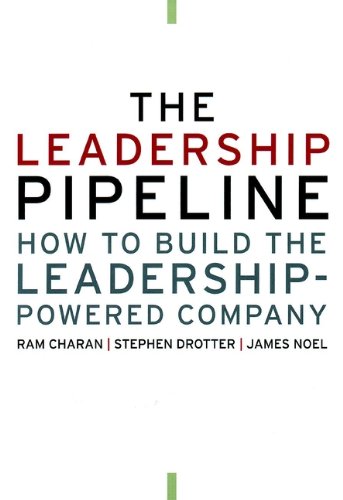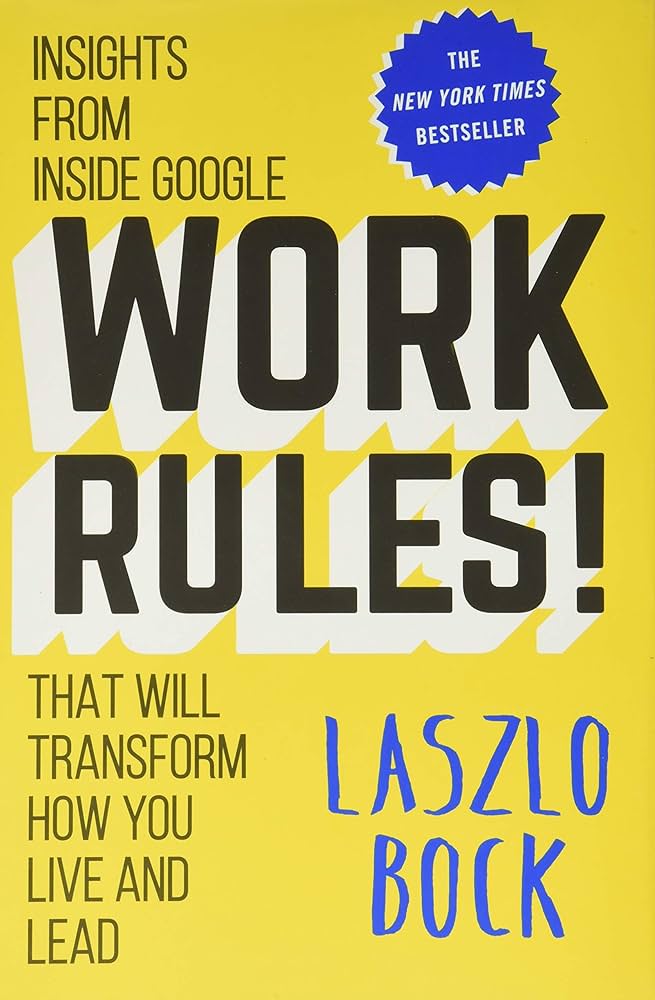The Leadership Pipeline: How to Build the Leadership-Powered Company
RATING


In this book Ram Charan and his two co-authors provide a roadmap for those currently in leadership positions on how to successfully build a nurturing culture and environment allowing for employee development and learning between each leadership stage. The fundamental methodology outlined in this book is a roadmap based on six different leadership stages that each leader goes through on their way to the top. The book points out current leadership failures and the lack of corporate adaptation to the new world of the dot.com era (the book was published in 2000). It then goes on building a methodology for top management to follow and implement to begin developing leaders from within. The book’s main criticism of the way leadership growth was failing back then was that leaders who moved up through each leadership tier to the next didn’t have the appropriate tools, skills or mindset to take on that next stage in leadership. Essentially, leaders need to forget the value structure of their previous position, and, as they progress, learn to lead in their new positions from a holistic perspective.

This book is split into two sections. The first section, chapters 1-7 are dedicated to building out the methodology and describing in detail what each turn of the “pipeline” looks like during this path of leadership succession that occurs. The image above illustrates each “pipeline passage” turn from one leadership stage to the next. Each passage has a specific definition and outlines the skills, time applications and values that are required to make the passage successful. The second section, chapters 8-13, focuses on resolving pipeline problems, creating development plans and more effectively managing leadership performance as well as tools and techniques for coaching leaders, dealing with succession issues, and preventing leadership failures.
This book does a great job of being the “all-in-one” solution to the problem it addresses. It gives you the fundamental definitions and explanations of each leadership position, then the tools to implement the methodology and finally the instruments to keep everything running smoothly. It’s well written with digestible leader relatable examples. Furthermore, while this book is fairly dated, the shortfalls that were hitting companies 20 years ago with leadership acquisition and development are just as valid today on an even greater scale.
Off the bat, be prepared for a slog. This book is content rich and provides useful examples to help you understand the methodology. If you’re in a position with the power to enact these types of structural changes (i.e. a CEO) then you may already know most of this from intuition and experience. Since this book is so focused on building this pipeline for developing leaders from within, it missed a valuable opportunity to directly target rising leaders to help them develop. While an intelligent leader with career growth opportunities is probably smart enough to extrapolate the information they need, it is not presented in a particularly neat package.
Together, these authors have more first-hand experience in leadership development and succession planning than you’re likely to find anywhere else. And here, they show companies how to create a pipeline of talent that will continuously fill their leadership needs-needs they may not even yet realize. The Leadership Pipeline delivers a proven framework for priming future leaders by planning for their development, coaching them, and measuring the results of those efforts. Moreover, the book presents a combination leadership-development/succession-planning program that ensures a steady line-up of leaders for every critical position within the company. It’s an approach that bolsters the retention of intellectual capital as it eliminates the need to go outside for expensive “stars,” who will probably jump ship before they reach their full potential anyway.
This book is targeted and most useful for executive level leaders looking to restructure their in-house leadership development programs. While it is focused on those readers, this book could also prove useful for anyone looking to climb the corporate leadership ladder.abover
See content on this topic

Sales training for front line along with basic development and coaching principles for line management.
Understanding how leaders must evolve with relation to the evolution of business models, new management models, and the significant changes to the workforce with Digital Natives now making up more than 50% of the workforce globally.
Understand the theory and mechanics of developing and managing a customer-centric and experience-driven corporate culture that is consistent and stable and includes elements of Employee Experience (EX) and Employee Relationship Management (ERM).
Understanding the evolution of leadership styles, management models, organizational structures, performance measurement and guiding change in the evolution of business models from product-centric to customer-centric and even relationship-centric.
Understand how to manage both internal and external digital transformation while considering the landscape for digital business models and the effect on traditional business models. Understanding organizational readiness for transformation and the role of corporate culture in managing transformations.
The changes in consumer behavior, employee behavior, and the evolution of business models in the digital age cause significant difficulties and imperatives for leaders who must develop new skills and evolve their leadership styles to be effective in this fast changing, challenging, and competitive environment.




 Copy Link
Copy Link
 E-mail
E-mail
 LinkedIn
LinkedIn
 Facebook
Facebook
 Telegram
Telegram
 WhatsApp
WhatsApp















 Go Back
Go Back
Leave a Reply
You must be logged in to post a comment.